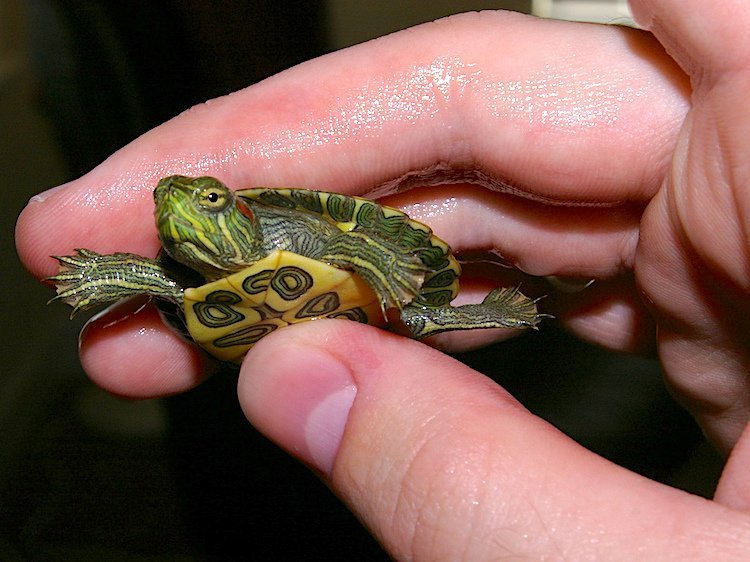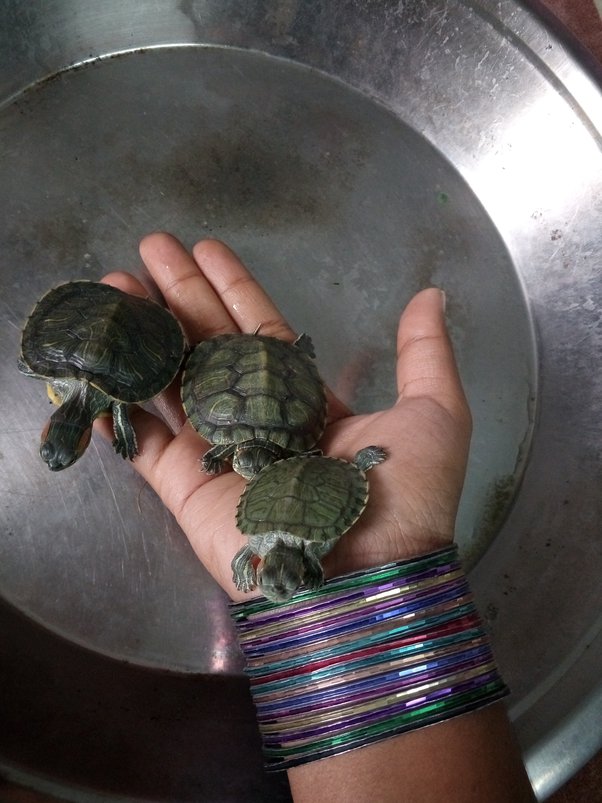Aquatic turtles can stay out of water for several hours, but it’s best to limit this time to 30 minutes to 2 hours for their well-being. Aquatic turtles are fascinating creatures that can adapt to both land and water environments.
Many pet owners wonder how long their aquatic turtle can safely stay out of water. Understanding the ideal conditions for these reptiles is crucial for their health and happiness. We will explore the factors that determine how long an aquatic turtle can stay out of water, including their species, age, and environmental needs.
By learning more about these fascinating creatures, you can provide the best care for your aquatic turtle and ensure they thrive in their habitat.
Physiological Adaptations
Aquatic turtles are fascinating creatures that have evolved over millions of years to adapt to their environment. One of their most impressive adaptations is their ability to spend time both in and out of water. While turtles are primarily aquatic creatures, they are also able to spend extended periods on land. In this article, we will explore the physiological adaptations that enable aquatic turtles to stay out of water for extended periods.
Respiratory System
The respiratory system of aquatic turtles is designed to allow them to remain underwater for extended periods. Unlike mammals, turtles do not have a diaphragm to control their breathing. Instead, they rely on a combination of buccal pumping and cloacal respiration to exchange gases.
Buccal pumping is the process of moving air in and out of the lungs by alternately expanding and contracting the mouth cavity. Cloacal respiration is the process of exchanging gases through the cloaca, which is the opening at the base of the tail. This allows turtles to extract oxygen from the water, enabling them to stay underwater for longer periods.
Temperature Regulation
Aquatic turtles are ectothermic, which means that they rely on external sources of heat to regulate their body temperature. While turtles are well adapted to spending time in water, they also need to regulate their body temperature when they are on land.
To do this, turtles bask in the sun to raise their body temperature. They also seek out shade or burrow into the ground to cool down. This ability to regulate their body temperature allows turtles to spend extended periods both in and out of water.
Conclusion
Aquatic turtles are remarkable creatures that have adapted to their environment in many ways. Their ability to stay out of water for extended periods is just one of their many impressive adaptations. By relying on a combination of buccal pumping, cloacal respiration, and temperature regulation, turtles are able to thrive both in and out of water.

Credit: www.petful.com
Behavioral Strategies
When it comes to staying out of water, aquatic turtles have developed various behavioral strategies to survive. These strategies include basking behavior, estivation, and brumation.
Basking Behavior
Aquatic turtles exhibit basking behavior to regulate their body temperature and absorb UV rays for metabolic function.
Estivation And Brumation
During hot and dry conditions, turtles enter estivation to conserve energy while in cold weather, they undergo brumation to slow down metabolic rate.
Species Variability
Species variability plays a crucial role in determining how long an aquatic turtle can stay out of water. Different types of aquatic turtles exhibit variations in their water dependency, which impacts their ability to survive on land. Understanding the species-specific needs of aquatic turtles is essential for their proper care and well-being.
Different Types Of Aquatic Turtles
There are various species of aquatic turtles, each with its own unique characteristics and behaviors. Some common types of aquatic turtles include:
- Red-eared slider
- Painted turtle
- Map turtle
- Snapping turtle
Variations In Water Dependency
Aquatic turtles differ in their reliance on water for survival. While some species, such as the red-eared slider, spend the majority of their time in water, others, like the snapping turtle, are more adaptable to terrestrial environments. The varying degrees of water dependency among different species impact their ability to stay out of water for extended periods.
Environmental Factors
Environmental factors play a crucial role in determining how long an aquatic turtle can stay out of water. Various elements such as climate impact and habitat conditions significantly influence the turtle’s ability to survive outside of its aquatic environment. Understanding these factors is essential for providing optimal care for pet aquatic turtles and ensuring their well-being.
Climate Impact
The climate has a direct impact on an aquatic turtle’s ability to stay out of water. Temperature and humidity levels in the surrounding environment can affect the turtle’s overall health and well-being. Warmer climates may allow turtles to stay out of water for longer periods, while colder temperatures may require them to seek water more frequently to regulate their body temperature and prevent dehydration.
Habitat Conditions
The habitat conditions in which an aquatic turtle resides can also influence its ability to stay out of water. Factors such as access to shade, availability of hiding spots, and proximity to water sources can impact how long a turtle can remain out of its aquatic habitat. Turtles in well-maintained, spacious enclosures with access to both basking areas and water sources are likely to thrive and stay out of water for longer durations compared to those in suboptimal conditions.
Survival Challenges
Aquatic turtles face several survival challenges when staying out of water for extended periods. These challenges include predation risk and resource availability, which significantly impact their ability to survive on land.
Predation Risk
Aquatic turtles are vulnerable to predation when they are out of water. Predators such as birds, mammals, and other reptiles can pose a threat to their safety, making it essential for turtles to find suitable hiding spots to minimize their risk of being attacked.
Resource Availability
When aquatic turtles venture onto land, they may encounter challenges related to resource availability. Access to food, suitable shelter, and nesting sites can be limited, impacting their ability to sustain themselves while out of their natural aquatic habitat.

Credit: pethelpful.com
Human Interaction
When it comes to the interaction between aquatic turtles and humans, it’s important to understand the impacts of human activities and the conservation efforts that play a crucial role in preserving the natural habitat of these fascinating creatures.
Impacts Of Human Activities
Human activities can have a significant impact on the well-being of aquatic turtles. Pollution from industrial waste and plastic debris can contaminate their natural habitats, leading to health issues and reduced reproductive success. Habitat destruction due to urbanization and deforestation also poses a threat to the survival of aquatic turtles, limiting their access to suitable nesting and foraging areas.
Conservation Efforts
Conservation efforts are essential in safeguarding the future of aquatic turtles. Habitat restoration projects aim to create and maintain suitable environments for these reptiles to thrive. Educational programs help raise awareness about the importance of preserving aquatic turtle habitats and the need for responsible human behavior. Legislation and regulations play a crucial role in protecting these creatures by enforcing restrictions on activities that may harm their natural habitats.
Credit: www.quora.com
Conclusion
Understanding the limits of an aquatic turtle’s time out of water is crucial for their well-being. By respecting their need for water, you can ensure their health and happiness. Remember, aquatic turtles are adapted for life in water, so always prioritize their aquatic environment for their longevity and vitality.






Leave a Reply